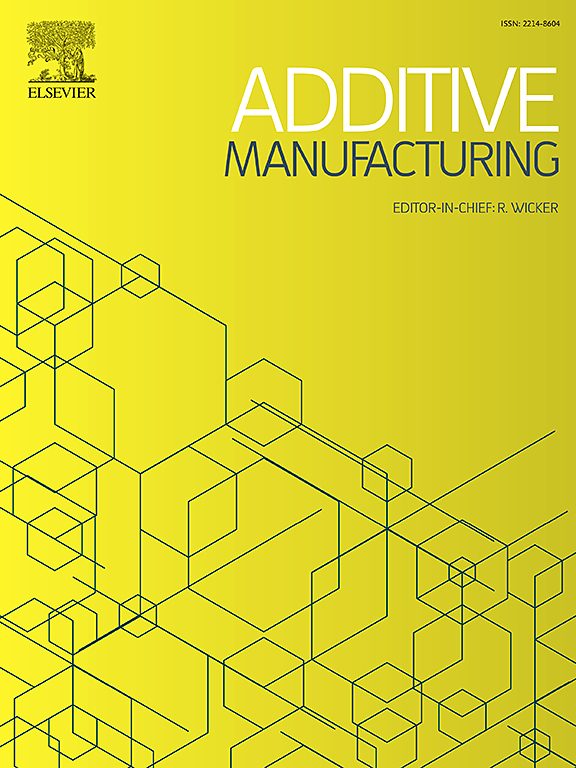Precipitation behavior and grain growth of Inconel 718 deposited by induction heating-assisted laser directed energy deposition
IF 10.3
1区 工程技术
Q1 ENGINEERING, MANUFACTURING
引用次数: 0
Abstract
This study investigated the precipitation behavior of secondary phases and the grain formation mechanism in Inconel 718 (IN718) prepared by induction heating-assisted laser directed energy deposition (IH-A LDED) depending on the induction heating conditions applied to the deposit. In contrast with conventional LDED, which applies only laser-induced heat during deposition process, the IH-A LDED additionally uses an induction heater to maintain the deposit at a specific temperature. Thus, real-time heat treatment can be implemented during the IH-A LDED process. To compare the secondary phases and grain morphologies formed at different induction heating temperatures, a conventional LDED deposit without induction heating was fabricated, along with three IH-A LDED deposits, which were heated to the temperatures used in the homogenization, solution, and aging heat treatments of IN718. The phase and grain analyses were performed for each deposit, and tensile properties and creep stabilities of each deposit were compared. During the deposition process, two pyrometers were used to measure the temperature profiles, and these data were employed to validate numerical models of the IH-A LDED process. These numerical models were used to derive the hold temperature and hold time and to explain the precipitation behavior of the secondary phases observed in each deposit through the time–temperature–transformation diagram. In addition, solidification parameters depending on the induction heating conditions were derived, and the grain formation mechanism was elucidated.
求助全文
约1分钟内获得全文
求助全文
来源期刊

Additive manufacturing
Materials Science-General Materials Science
CiteScore
19.80
自引率
12.70%
发文量
648
审稿时长
35 days
期刊介绍:
Additive Manufacturing stands as a peer-reviewed journal dedicated to delivering high-quality research papers and reviews in the field of additive manufacturing, serving both academia and industry leaders. The journal's objective is to recognize the innovative essence of additive manufacturing and its diverse applications, providing a comprehensive overview of current developments and future prospects.
The transformative potential of additive manufacturing technologies in product design and manufacturing is poised to disrupt traditional approaches. In response to this paradigm shift, a distinctive and comprehensive publication outlet was essential. Additive Manufacturing fulfills this need, offering a platform for engineers, materials scientists, and practitioners across academia and various industries to document and share innovations in these evolving technologies.
 求助内容:
求助内容: 应助结果提醒方式:
应助结果提醒方式:


